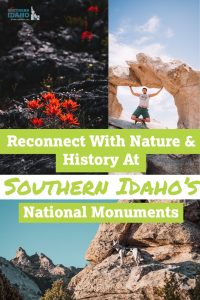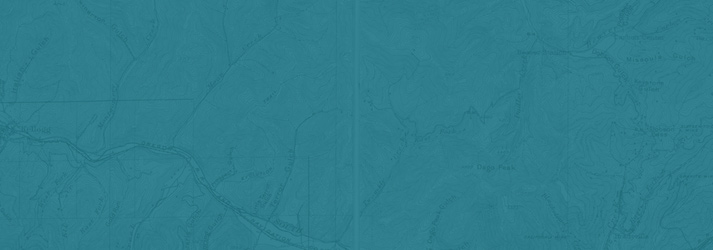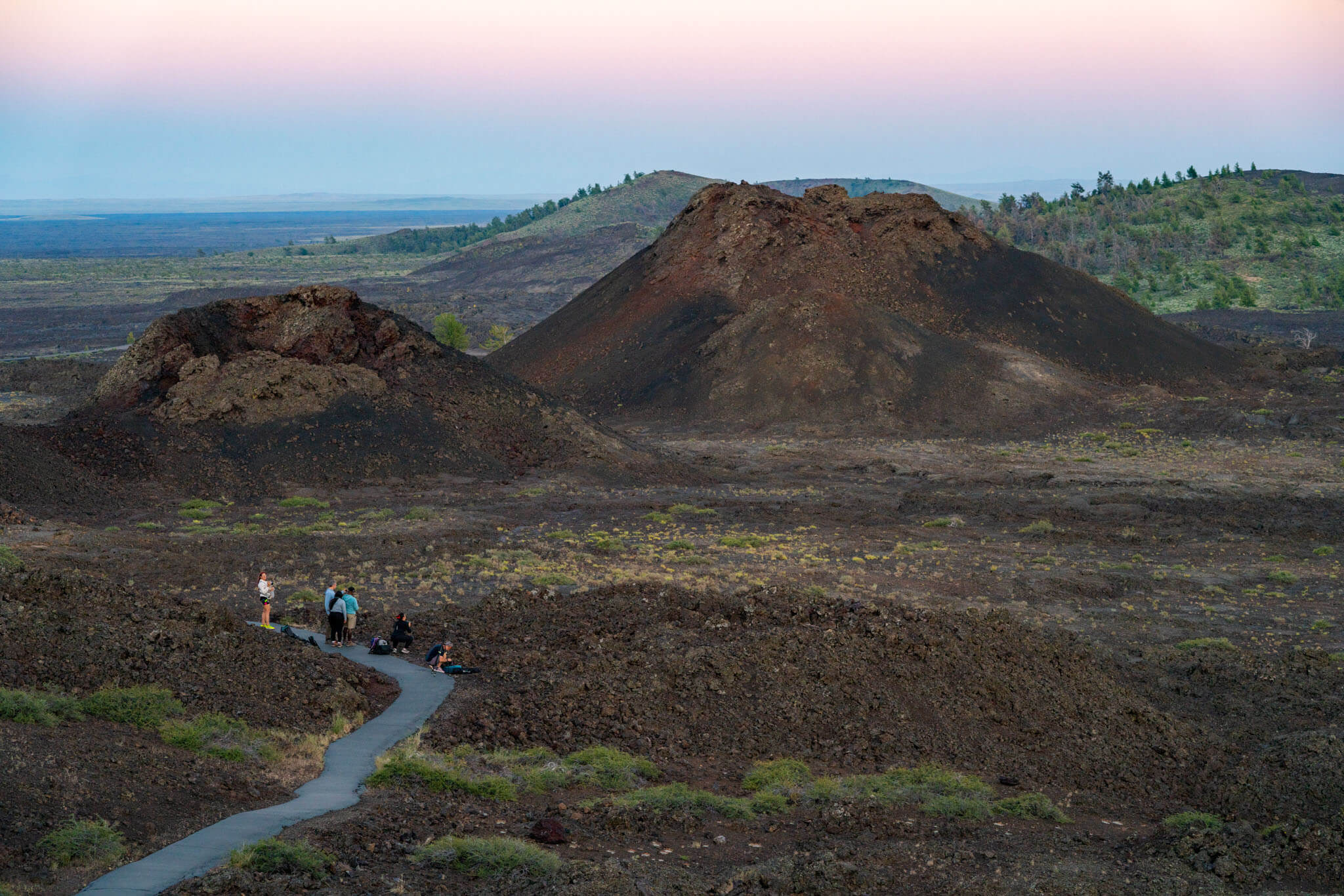
Reconnect With Nature and History at Southern Idaho’s National Monuments
Southern Idaho is home to four of the most wild and diverse national monuments in the nation, all rich in natural and human history. Whether you visit them on their own or plan a vacation-within-a-vacation on the way to Yellowstone. You’ll discover educational and recreational opportunities that will help you connect with the past — and live big today.
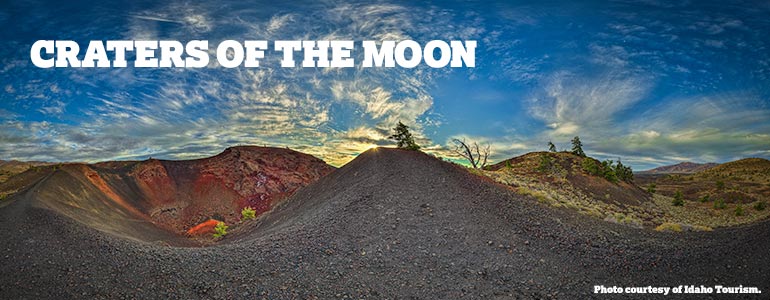
Craters of the Moon National Monument
Stand in this vast ocean of lava flows and you really do feel as if you’re on the moon — in fact, astronauts Alan Shepherd, Edgar Mitchell, Eugene Cernan and Joe Engle came here as part of their training for the moon landing.
Craters of the Moon’s beautiful, alien terrain was created by eight major volcanic flows that occurred between 15,000 and 20,000 years ago. The resulting swathes of black rock are both mesmerizing and full of surprises: Come here in the spring and you’ll see the hardy, colorful wildflowers that manage to thrive in this harsh landscape.
The area was championed by legendary Idaho explorer and author Robert “Two-Gun Bob” Limbert, who published an article, “Among the Craters of the Moon,” in National Geographic Magazine in 1924. President Calvin Coolidge designated the area a national monument that same year. Craters of the Moon would make history again in 1970, when a portion of it was classified as wilderness — the first federally designated wilderness within a national park system.
What to know: Craters of the Moon has an impressive cave system that is open to the public (don’t forget your flashlight!). Wherever you go in the park, wear sunscreen and a brimmed hat to shield yourself from the sun. A free Wilderness Permit is required to stay in the park’s designated wilderness area; you can pick one up at the Visitor Center during business hours.
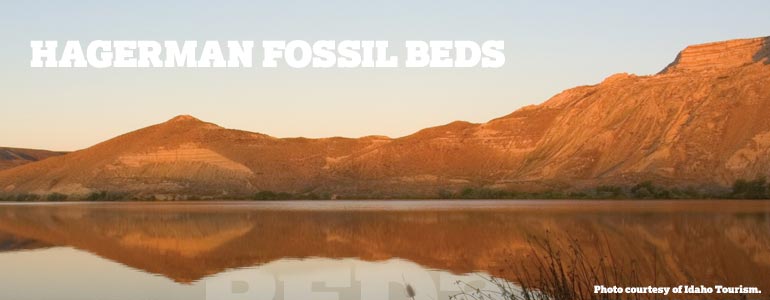
Hagerman Fossil Beds National Monument
Stand in this peaceful area — brimming with waterfalls and cool, bubbling springs — and you’d never know that it was a hotbed of ferocious activity thousands of years ago. That is, unless you looked under your feet. The Hagerman Fossil Beds National Monument is a treasure trove of evidence of the area’s past, including sabertooth cats, bears, mastodons, ground sloths — even camels! More than 3,000 new fossil fragments are found each year.
The area’s superstar fossil is the Hagerman Horse, or Equus simplicidens, which was the link between prehistoric equines and modern horses. It was about the size of an Arabian horse but sported stripes like a zebra. Three million years ago, these ancient horses flocked to the area. In 1928, cattle rancher Elmer Cook discovered Hagerman Horse fossils. The Smithsonian took a keen interest, eventually importing three tons of fossils to Washington, D.C., from the area.
What to know: Start your trip at the Visitor Center, located at 221 N. State Street in Hagerman, to begin your visit. Stay on designated trails while you’re at the monument. Fun fact: This monument is one of only four units in the National Park system that contains part of the Oregon National Historic Trail. Check out the wagon ruts from the Oregon Trail Overlook parking lot.
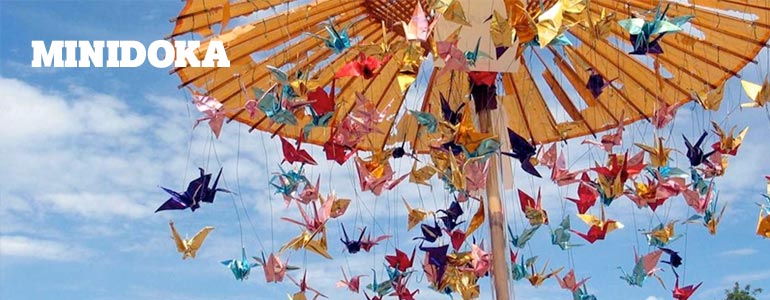
Minidoka National Monument
This is one of Idaho’s newest parks, and it explores one of the most painful chapters in the nation’s history: The forced internment of thousands of Japanese and Japanese-Americans during World War II.
Between 1942 and 1945, this remote site served as a detention center during the relocation of 120,000 West Coast residents of Japanese ancestry. More than 10,000 internees were transferred to this spot in the high desert of Southern Idaho under orders from President Franklin Roosevelt. Internees included many ordinary families and notable people, including William K. Nakamura, a Medal of Honor recipient; Newton K. Wesley, who helped develop the contact lens; and composer Paul Chihara, among many others.
When the war against Japan ended in 1945, the internees were released; survivors and their descendants still farm in the area. The site became a national monument in 2001, and it’s still being developed.
What to know: This historic site is under development, so wear sturdy footwear and bring water. There is little to no shade but portable toilet facilities are available. There is no fee to enter this site.
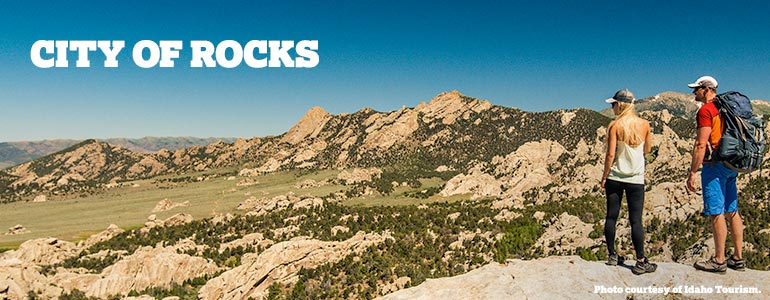
City of Rocks National Reserve
Pioneers traveling west in covered wagons were stunned by this “silent city” of towering natural spires and rock formations. Today, the 14,407-acre reserve is a haven for bikers, hikers, amateur geologists, and rock climbers from around the world. Towering pinnacles and domes lord over this area. The park is located at the south end of the Albion Mountains. Climbers can find more than 600 routes ranging from 5.6 (relatively easy) to 5.14 (most difficult).
Birders find hours of entertainment here thanks to the Greater Sage Grouse, Pinyon Jay, Virginia’s Warbler, Gray Flycatcher, Bushtit, Plumbeous Vireo, and Black-Throated Gray Warblers that live here. In fact, there are 163 species of birds at this monument!
City of Rocks is also a perfect escape for horseback riders, hunters, and photographers. Feel like sitting back and taking in the landscape? The City of Rocks Backcountry Byway starts in Albion and wends through the reserve for 49 miles.
What to know: Campers and hikers flock to the area from the spring through early winter, so be sure to snag a campsite reservation before going. Don’t forget to bring plenty of water. All roads are gravel, and some may be impassable from November through April.
Start Your Trip Off Right!
Drop by one of Southern Idaho’s visitor centers for locals-only insights and tips on where to find the region’s best hidden gems.
Even More Adventure!
Southern Idaho is home to even more natural wonders.
- Shoshone Ice Caves
- Black Magic Canyon
- Castle Rocks State Park
- Idaho’s Mammoth Cave
- Wilson Butte Cave
- Four Scenic Drives to Enjoy Fall Colors
- Five Outdoorsy Tips Guaranteed to Please for Labor Day Weekend in Southern Idaho
- Balanced Rock
Pin it for Later!
